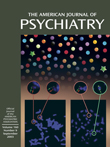Disabilities, Quality of Life, and Mental Disorders Associated With Smoking and Nicotine Dependence
Abstract
OBJECTIVE: Epidemiological studies have reported an association between smoking and mental disorders. However, little is known about the impairment associated with nicotine dependence. METHOD: The authors assessed health-related quality of life, disability, and psychiatric comorbidity in adults with and without nicotine dependence. The analysis was based on data from 3,293 respondents, ages 18 to 65, from the German National Health Interview and Examination Survey, a nationally representative multistage probability survey conducted from 1997 to 1999. The authors assessed rates of smoking and health-related quality of life (Medical Outcomes Study 36-item Short-Form Health Survey) by questionnaires. Nicotine dependence and other mental disorders were assessed with a modified version of the Composite International Diagnostic Interview. RESULTS: The population prevalence of current smoking was 36.2% and the 1-year prevalence of nicotine dependence was 9.4%. Nicotine-dependent smokers reported a poorer quality of life than the subjects without nicotine dependence. These relationships were stable after adjustment for sociodemographic characteristics. More than half of the subjects with nicotine dependence fulfilled criteria for at least one other mental disorder. Subjects suffering from nicotine dependence reported greater disability in the last month and in the last year. CONCLUSIONS: Smokers with nicotine dependence should be distinguished from other smokers in evaluations of the health status of populations.



